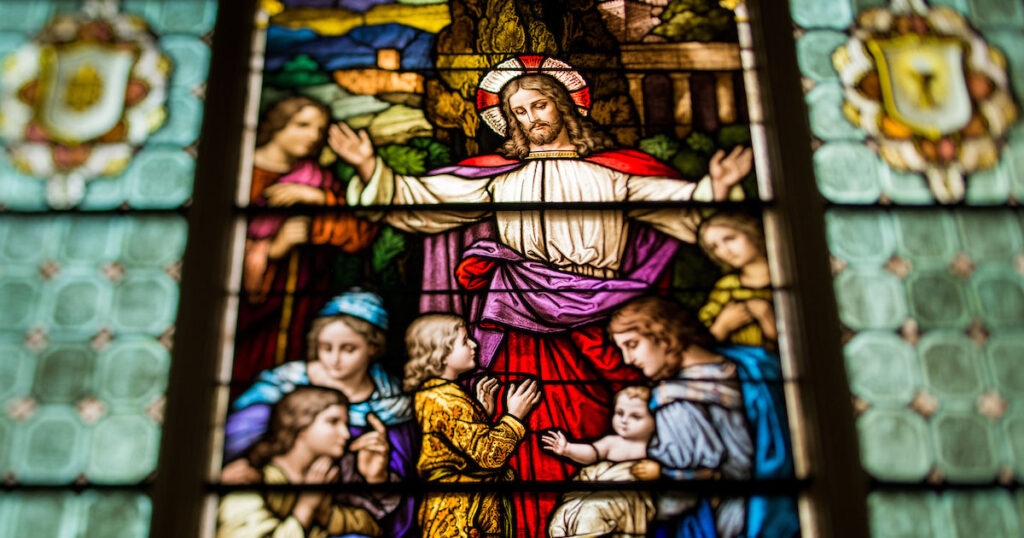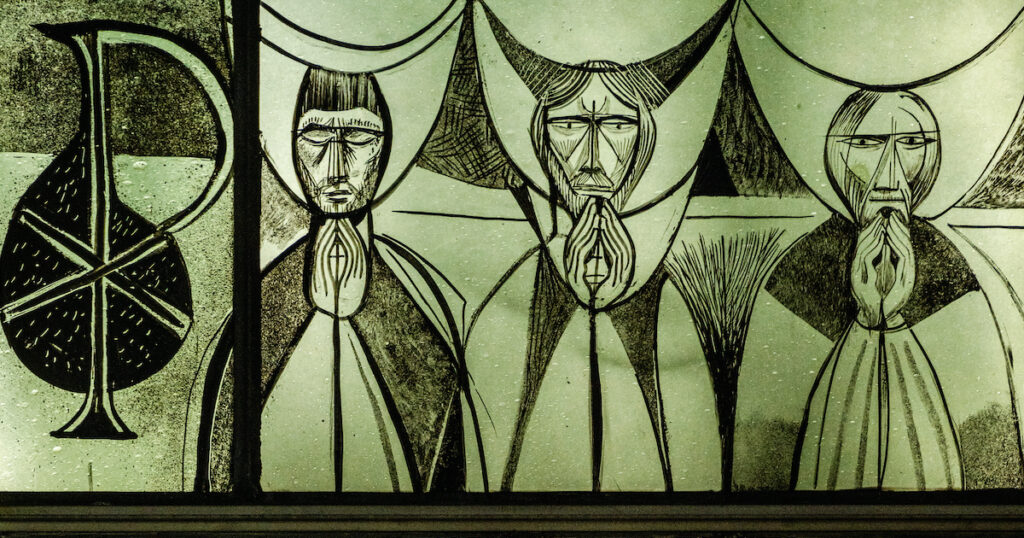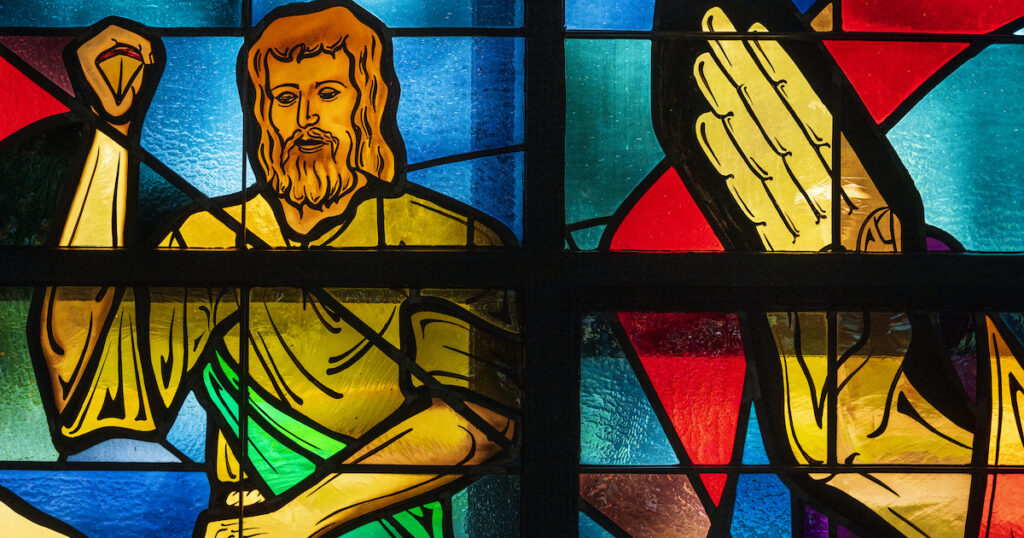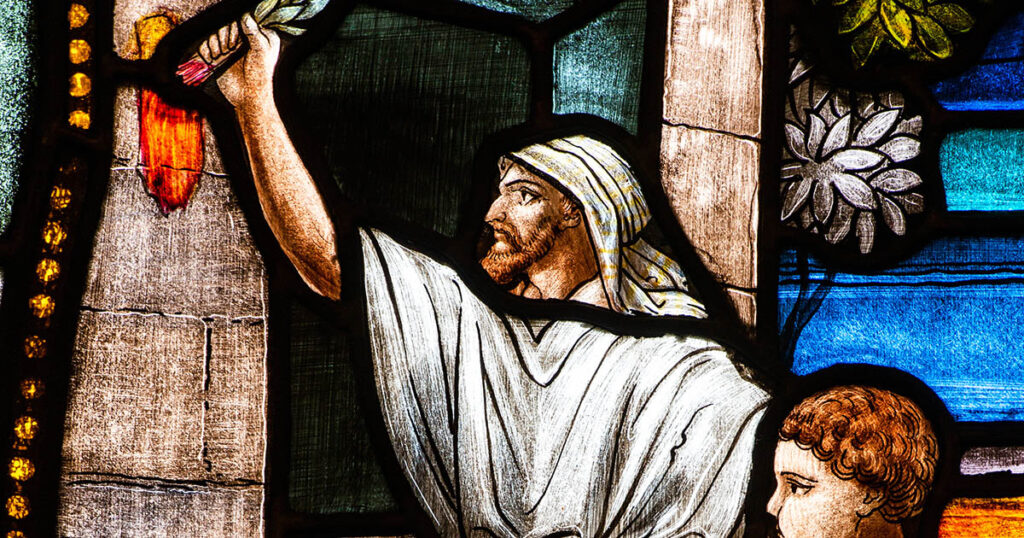The Rev. Dr. Geoff Boyle is taking us through the Old Testament with the Early Church fathers.
“For I know that my Redeemer lives,
Job 19:25–27
and at the last he will stand upon the earth.
And after my skin has been thus destroyed,
yet in my flesh I shall see God,
whom I shall see for myself,
and my eyes shall behold, and not another.”
“I know that my Redeemer lives; What comfort this sweet sentence gives!” (LSB 461:1)
The celebration of the resurrection, particularly in the face of death and grief, is the hallmark of the Christian faith. Our hymns, prayers, preaching and the comfort of one Christian to another find expression in a most unexpected figure: Job.
Outside the crucifixion of Jesus, you can’t find a figure more illustrative of suffering than Job. And what the great fathers of the church do so marvelously is demonstrate that even the likes of Job — or you or me — are not outside of the crucifixion of Jesus, but inside. Job’s suffering is Christ’s suffering and it runs the other way around, too. That is St. Gregory the Great’s goal: “Always be eager to commit to memory that original cause that I have proposed, namely, that blessed Job is called a sufferer, and therein is the passion of the Lord and the sufferings of his Body the church portrayed.”[1] Christ, Job, you — there’s a mysterious unity that binds all together in cross and resurrection. That’s the Christian hope.
Now, St. Gregory (a.d. 540–604) began in the political realm, a senator’s son who eventually became prefect of Rome. He spent some time as a monk and was then asked to serve as the pope’s ambassador for political mediation. He later became pope by acclamation and is known for his mission work through England and his liturgical impact, not least of which is known today as Gregorian chant.
It was during the time of his role as apocrisiarius, papal ambassador, in the late 570’s and early 580’s that Gregory lectured through the book of Job. This massive work fills six volumes, each of which is well over 300 pages. He began leisurely working through each verse three times: expounding the literal sense (historical), the typological (Christological) and the moral (how we are to live). The first volume only covered 84 verses (Job 1:5–5:2). He increased the pace in each successive volume, covering roughly 160 verses each. That is, except for the third part, in which he covered 324 verses. There was such a demand for the full commentary to be released that he didn’t have time to edit the recorded notes from his lectures. So, while this volume is roughly the same length as the others, it covers about twice the Scripture, “where we do not so much say what we think as indicate what should be said.”[2] Our reflection on Job 19:25–27 comes from this third part:
He who no longer says Creator but Redeemer openly proclaims him who, after he created all things, in order that he might free us from captivity, appeared among us clothed with flesh and freed us from eternal death by his passion. We should also notice the great faith with which Job commits himself to the power of the divinity of Christ, of whom Paul says, Although he was crucified in weakness, he lives by the power of God (2 Cor 13:4). Job said, I know that my Redeemer lives. He could say in clearer words, “Every unfaithful person would know him: scourged, derided, struck with the palm of the hand, crowned with thorns, mocked with spittle, crucified, and dead. I, however, believe in him with unwavering faith, him who lives after death, and with full voice I confess that my Redeemer lives, who died at the hands of impure men.” But through this resurrection, blessed Job, what is your confidence in the resurrection of your own flesh? We beg you to confess that openly with your voice. The next verse:
And on the last day I will rise from the earth. Obviously the resurrection that he reveals in himself, he is one day going to bring about in us. Unquestionably the resurrection that he reveals in himself he promised to us, because the members follow the glory of their Head. Accordingly our Redeemer accepted death in order that we might not fear death. He revealed the resurrection, in order that we might have confidence in the possibility of our own resurrection. That is why he did not will his death to exceed three days, lest if his own resurrection were delayed, ours would be entirely hopeless. The prophet rightly said of him, He drinks from the stream on the wayside, so he will lift up his head (Ps 109:7 [Eng. Ps 110:7]). It is as though he deigned to drink from the stream of our pain, not at a rest stop but on the road, he who tasted death temporarily, that is, for three days, and in that death that he tasted he by no means remained like us until the end of the world. So when he rose on the third day, he showed what would follow in his Body that is the church. He demonstrated by his own example what he promised to bestow, that just as the faithful realized that he had risen, they might hope for the prize of their own resurrection at the end of the world…
Since, however, our use of reason has become dull, the Redeemer’s grace has come forward as an example. Our Creator, you see, came and accepted death and revealed the resurrection, so that we, who have refused to hold the hope of resurrection by reason, might hold it by the help of his example. Let the blessed Job then say, I know that my Redeemer lives, and on the last day I will rise from the earth. Whoever, then, despairs of the possibility of the power of the resurrection’s being effective in his life should blush at the words of this man of faith who is a Gentile. He should also carefully estimate the heavy penalty that will be clapped on him if he still does not believe in his own resurrection when he knows that the Lord’s resurrection has already taken place, if Job believed in his own resurrection while he hoped in the Lord’s resurrection, which was still to happen.
Yet see how I hear resurrection, but I am still waiting for the effect of that resurrection. I believe that I am going to rise, but I want to hear how. I surely need to know whether perhaps it will be that I will rise in some other subtle or airy body, or in the one in which I die. But if I will rise in an airy body, it will no longer be I who rise. How is there a true resurrection if there cannot be true flesh? Simple reason supplies the fact that if there would not be true flesh, the resurrection would doubtless not be true. Nor is it right for us to call it resurrection when that which falls does not rise. But blessed Job, please remove our clouds of doubt, and since you have received the grace of the Holy Spirit, and you have begun to tell us about our hope of resurrection, show us clearly if our flesh really rises.
I will again be wrapped up in my own skin (Job 19:26). Since he openly says skin, all doubt about the true resurrection vanishes, because our body will not be intangible in that glorious resurrection, or more subtle than wind or air, as Eutychius, the bishop of the city of Constantinople, wrote. In that glorious resurrection our bodies will indeed be subtle through the effect of spiritual power, but tangible as well through their actual nature…
Finally, in order to take away all hesitation from our thoughts, he added,
In my flesh I will see God (Job 19:26). Here is the resurrection, here the skin, here the flesh openly confessed in words. What is left, accordingly, on which our mind can still doubt?…
We follow blessed Job’s faith, and we believe in the really tangible body of our Redeemer after the resurrection. Consequently we affirm that our flesh after the resurrection will be both the same and different: the same by nature and different by glory, the same in truth and different in power. It will be delicate, because incorruptible. It will be tangible, because it will not lose the essential reality of its nature. The holy man shows us with what hope he holds that same confidence in the resurrection and with how much certitude he awaits it.[3]
St. Gregory takes up a dialogue with Job. He’s always looking for certainty, for the confidence of faith, and finding that Job doesn’t disappoint. He asks three questions: 1) what confidence do you have in the resurrection of your flesh? 2) Is it really our flesh that rises? 3) Is it the same flesh that we have now?
Notice that Gregory begs for this confidence not from St. Paul or St. Matthew, but blessed Job. He shows us that the mystery of the death and resurrection of our Lord, with flesh like ours, is contained in the witness of the Old Testament. Not only that, but he does not import this teaching from the New into the Old; he finds it in Job’s own words. In these three verses Job proclaims the resurrection of Jesus and the resurrection of all who belong to Him. He comforts the fearful conscience and sets before us the resurrection of our very flesh, the same flesh in which we now live and move and have our being. Of course, in the resurrection, St. Gregory says, it will be glorified: “Consequently we affirm that our flesh after the resurrection will be both the same and different: the same by nature and different by glory, the same in truth and different in power.”[4] Nonetheless, it is truly we who will be resurrected. What goes for Jesus, the Head, goes for us, His Body. Thanks be to God!
[1] Gregory the Great, Moral Reflection on the Book of Job, Vol. 3; Books 11-16, trans. Brian Kerns (Collegeville: Liturgical Press, 2016), 5. Purchase a copy here.
[2] Moral Reflection on the Book of Job, Vol. 3, p. 5.
[3] Moral Reflection on the Book of Job, Vol. 3, 191-200.
[4] Ibid., 200.






I needed to read this.